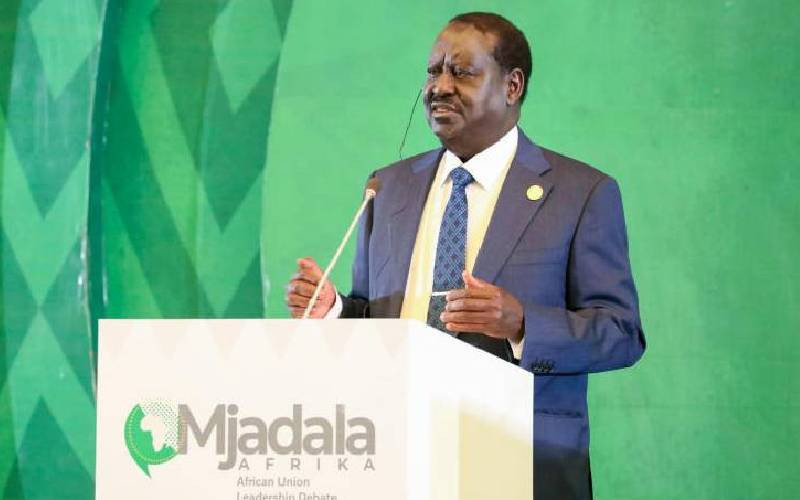More resources should be injected into energy, roads and water to elevate Africa’s infrastructure, a senior official at the International Monetary Fund’s (IMF) has said.
In an interview with Business Beat, the director of IMF’s African department, Antoinette Sayeh, said while the continent has put “tremendous efforts” in these sectors, there is more to be done as the region is still grappling with power blackouts, poor roads and insufficient access to clean water.
Key challenges
“Infrastructure is one of the key challenges facing policymakers in the region.
“The benefits are fairly clear: with improved infrastructure, new growth opportunities in the manufacturing and services sector can be generated, barriers to intra-regional trade can be reduced, and economies will be better positioned to transition from low to higher productivity activities,” she said.
Ms Sayeh argued that without improved infrastructure, the move to increase productivity and the greater economic diversification necessary to sustain Africa’s current growth momentum may not materialise.
In the latest Regional Economic Outlook: Sub-Saharan Africa, economists from the IMF observed that many countries have managed to maintain, or even increase, their public investment in infrastructure over the last decade.
The lion’s share of these projects, however, is still financed domestically through increased tax revenues or by local investors buying domestic public debt.
Some African banks are also stepping in to finance infrastructure projects. With its relatively improved investment profile, Africa is now attracting external financing, most notably from China.
“With new financing instruments, institutional investors, including pension funds, could soon be more willing to finance relatively risky but high-return projects in the region,” Sayeh said.
In the recent past, Kenya has been recognised by the international community for its efforts to improve the business climate, with the focus being on reducing the cost of power and modernising roads.
Mid this month, President Uhuru Kenyatta commissioned a geothermal plant in Naivasha, Olkaria IV, which is tipped to generate 140 megawatts of energy and reduce costs of power by about 30 per cent. The President noted that with the reduced cost of energy, the prices of basic commodities, such as maize flour, are expected to drop.
Besides investing in alternative energy sources, the current regime has promised to build 10,000 kilometres of roads through alternative financing.
INVESTING IN INVESTMENT
Under this plan, 2,000 kilometres of small roads will be completed within the 2014/2015 financial year.
Stay informed. Subscribe to our newsletter
In 2015/2016, 3,000 kilometres, comprising 80 per cent small roads and 20 per cent highways, will be done. In the following financial year, 5,000 kilometres, 80 per cent of which will be small roads and 20 per cent highways, will be completed.
But Sayeh says this is not enough.
“Higher investment has not always translated into better outcomes for the population. Scaling up the infrastructure effort should go hand in hand with ‘investing in investment’ — that is, developing a clear vision for the whole sector, and planning spending beyond the current budget,” she said.
According to the IMF director, one key element of this process would be to have a central agency that prioritises the projects proposed by various ministries and conducts cost-benefit analyses.
She added that while the public sector remains a critical provider of infrastructure investment in Africa, the private sector should also be involved whenever possible to tame the risk of some valuable projects being postponed or abandoned due to public debt sustainability issues, to the detriment of future growth.
“The recent telecommunications revolution on the continent should act as a reminder that private companies can invest in infrastructure on their own if the business is sufficiently appealing and the business environment conducive to investment. This model could work in some cases for railway construction or electricity generation.”
 The Standard Group Plc is a
multi-media organization with investments in media platforms spanning newspaper
print operations, television, radio broadcasting, digital and online services. The
Standard Group is recognized as a leading multi-media house in Kenya with a key
influence in matters of national and international interest.
The Standard Group Plc is a
multi-media organization with investments in media platforms spanning newspaper
print operations, television, radio broadcasting, digital and online services. The
Standard Group is recognized as a leading multi-media house in Kenya with a key
influence in matters of national and international interest.
 The Standard Group Plc is a
multi-media organization with investments in media platforms spanning newspaper
print operations, television, radio broadcasting, digital and online services. The
Standard Group is recognized as a leading multi-media house in Kenya with a key
influence in matters of national and international interest.
The Standard Group Plc is a
multi-media organization with investments in media platforms spanning newspaper
print operations, television, radio broadcasting, digital and online services. The
Standard Group is recognized as a leading multi-media house in Kenya with a key
influence in matters of national and international interest.









